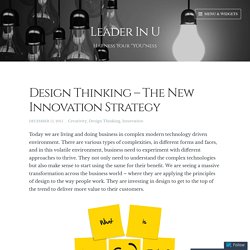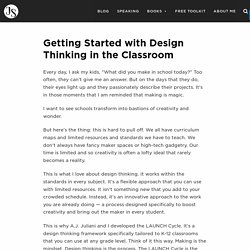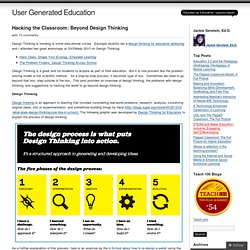

The Elephant and the Rider. Every now and then I come across a metaphor that really sticks and helps me think differently about something I see every day.

The metaphor helps me look at these situations with a new lens, and, as a result, think, feel, and act more effectively. I’ve heard of several ways to think about our thinking. I’ve heard of the left-brain and right-brain. Why we need creative confidence. In 2012, IDEO founder and longtime Stanford professor David Kelley took the TED stage in Long Beach and shared a deeply personal story.

It was the tale of his own cancer diagnosis, of finding a lump in his neck and being told he had a 40% chance of survival. This was clearly a sobering moment, but he wasn’t sharing the story to seek our sympathy. Rather, he wanted to talk about his resulting epiphany. “While you’re waiting for your turn to get the gamma rays, you think of a lot of things,” he said drily. Fixed vs. Growth: The Two Basic Mindsets That Shape Our Lives. By Maria Popova “If you imagine less, less will be what you undoubtedly deserve,” Debbie Millman counseled in one of the best commencement speeches ever given, urging: “Do what you love, and don’t stop until you get what you love.

Work as hard as you can, imagine immensities…” Far from Pollyanna platitude, this advice actually reflects what modern psychology knows about how belief systems about our own abilities and potential fuel our behavior and predict our success. Much of that understanding stems from the work of Stanford psychologist Carol Dweck, synthesized in her remarkably insightful Mindset: The New Psychology of Success (public library) — an inquiry into the power of our beliefs, both conscious and unconscious, and how changing even the simplest of them can have profound impact on nearly every aspect of our lives. TEDxStanford - Tina Seelig - A crash course in creativity. 8 Tips and Tricks to Redesign Your Classroom. Remake Your Class is a 3-part video series that covers how one educator transformed his classroom with the help of his students, some community volunteers, and design experts.

Editor's Note: Author David Bill is a designer and educator who consulted with The Third Teacher+ on the Remake Your Class project highlighted in the videos below. The tips in this post go along with the companion video. A Brilliant Question. Not Essential There is a difference between essential questions and brilliant questions.

While essential questions touch upon the most important issues of life, they are rarely brilliant. Essential questions touch our hearts and souls. They are central to our lives. Many, Many Examples Of Essential Questions. Many, Many Examples Of Essential Questions by Terry Heick Essential questions are, as Grant Wiggins defined, ‘essential’ in the sense of signaling genuine, important and necessarily-ongoing inquiries.”
Design Thinking – The New Innovation Strategy – Leader In U. Today we are living and doing business in complex modern technology driven environment.

There are various types of complexities, in different forms and faces, and in this volatile environment, business need to experiment with different approaches to thrive. They not only need to understand the complex technologies but also make sense to start using the same for their benefit. We are seeing a massive transformation across the business world – where they are applying the principles of design to the way people work.
An Exercise in Design Thinking: Step 1: Discovery Browsing the “printable backpacking checklist” search results, I ran into two common themes: They’re either all super rigid, bloated and overly exhaustive, or they’re not actually printable.

For example, many are weighed down with various bright colors/artwork (increased ink usage) or they’re not formatted to print in any sort of logical/economical way. Design Thinking – John Spencer. Every day, I ask my kids, “What did you make in school today?”

Too often, they can’t give me an answer. But on the days that they do, their eyes light up and they passionately describe their projects. It’s in those moments that I am reminded that making is magic. I want to see schools transform into bastions of creativity and wonder. But here’s the thing: this is hard to pull off. Le design thinking dans l'éducation — Enseigner avec le numérique.
How to Use Design Thinking in the Classroom to Build Problem-Solving Skills. L'aménagement des salles de classe pour améliorer l'attention des élèves. Livret à télécharger : 8 stratégies de retour au calme à proposer aux enfants face aux émotions fortes. 50 Questions To Help Students Think About What They Think - TeachThought. Contributed by Lisa Chesser Using the right questions creates powerful, sometimes multiple answers and discussions.

Aristotle said that he asked questions in response to other people’s views, while Socrates focused on disciplined questioning to get to the truth of the matter. Ultimately questions spark imagination, conjure emotions, and create more questions. The questions asked by a teacher or professor are sometimes more glaringly valuable than the information transferred to the students. Pistes face aux difficultés de comportement. Pistes (2) face aux difficultés de comportement. Éducation, plasticité cérébrale et recyclage neuronal - Psychologie cognitive expérimentale - Stanislas Dehaene - Collège de France - 06 janvier 2015 09:30. How to Apply Design Thinking in Class, Step By Step. By Anne Stevens For educators ready to try the idea of design thinking, you’ll be glad to know it does not require extensive transformation of your classroom.
That said, it can be a transformative experience for all involved. Here, we try to answer your questions about integrating different components of a design learning experience into familiar, pre-existing scenarios that play out in every school. Can my classroom become a space of possibility? Hacking the Classroom: Beyond Design Thinking. Design Thinking is trending is some educational circles.

Edutopia recently ran a design thinking for educators workshop and I attended two great workshops at SXSWedu 2013 on Design Thinking: Design Thinking is a great skill for students to acquire as part of their education. La Pédagogie Freinet : une Éducation Coopérative. 12 stratégies de mémorisation... pour réactiver les informations efficacement. Differenciation-L organisation temporelle. Design thinking : quelques méthodes d'animation d'ateliers collaboratifs - Partie 1.
Design thinking : quelques méthodes d'animation d'ateliers collaboratifs - Partie 2. 4 idées pour rendre vos formations plus qualitatives et déclencher le bouche à oreille. Untitled.